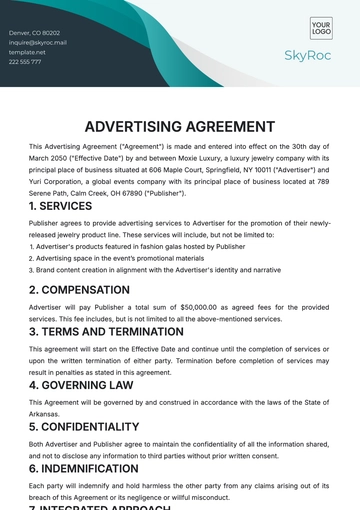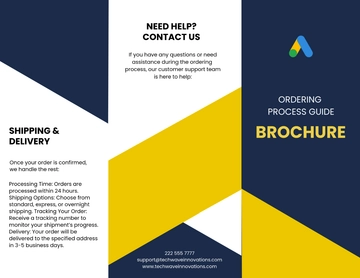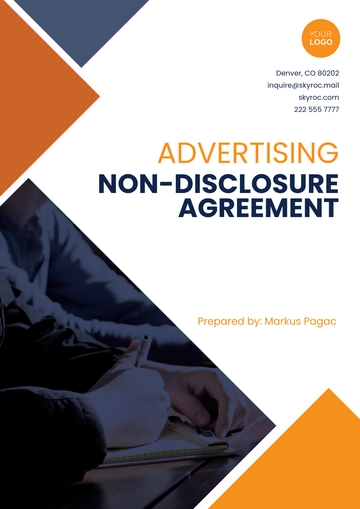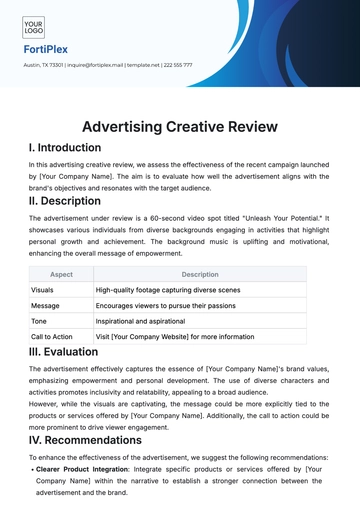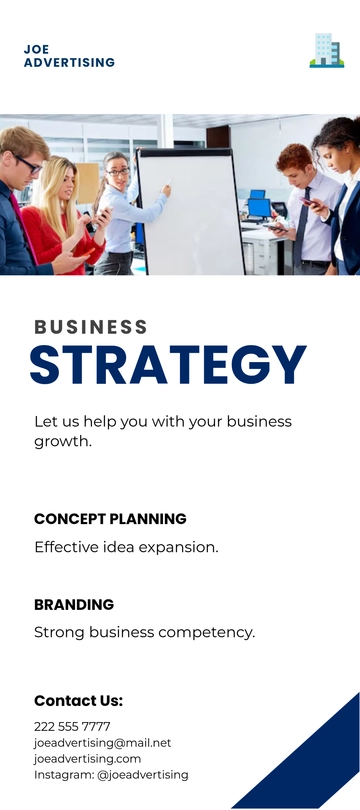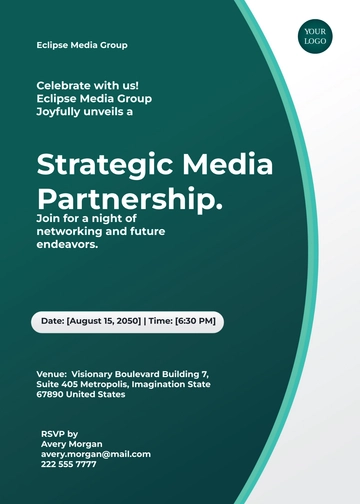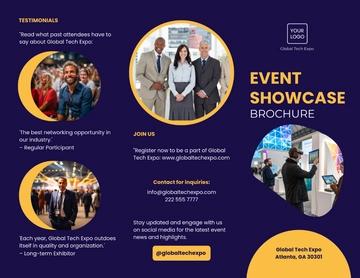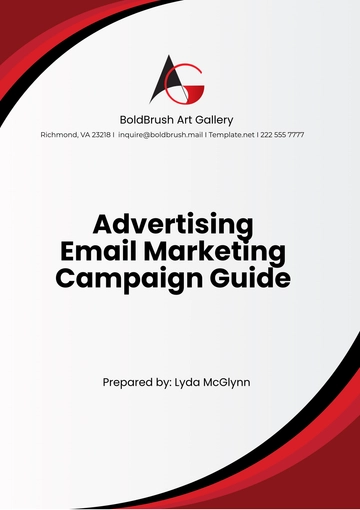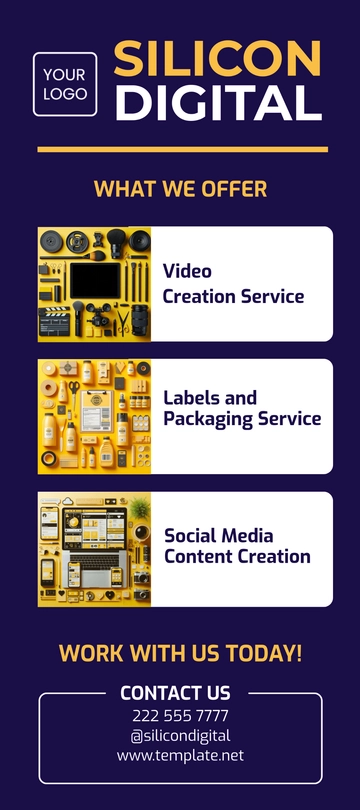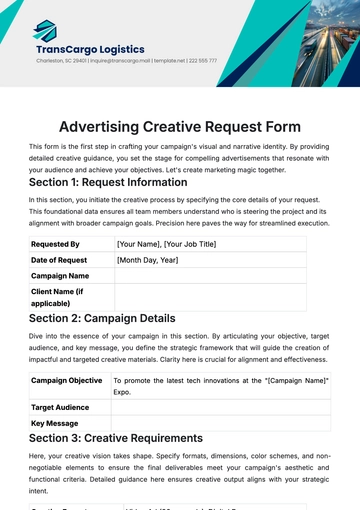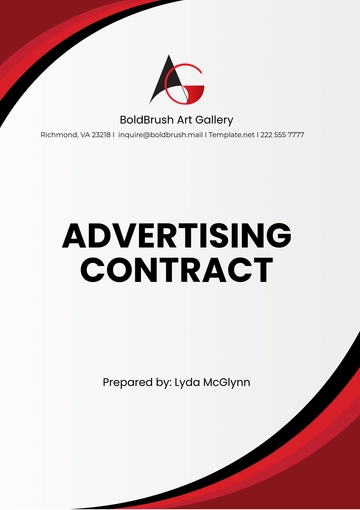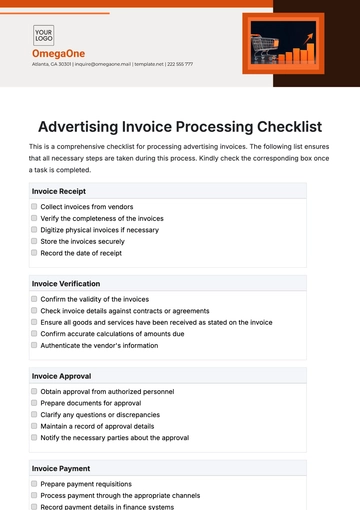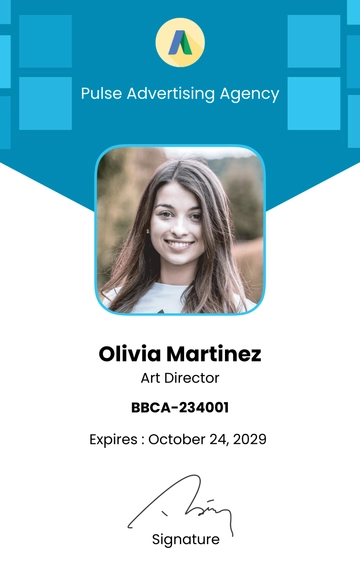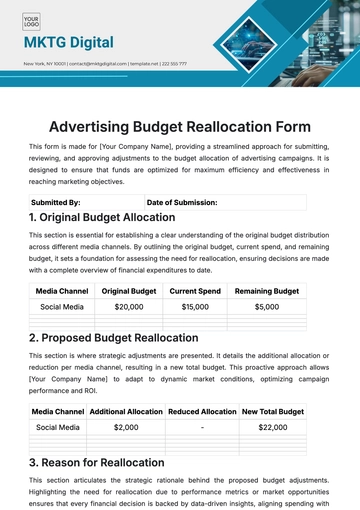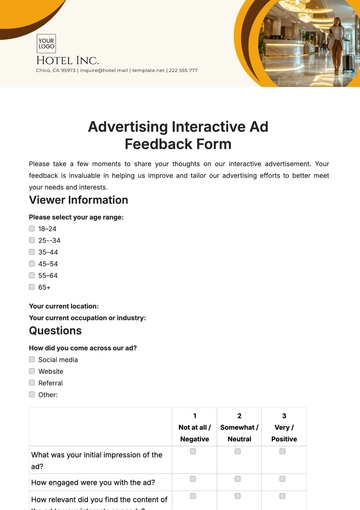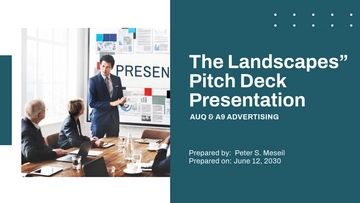Free Media Relations SOP in Advertising
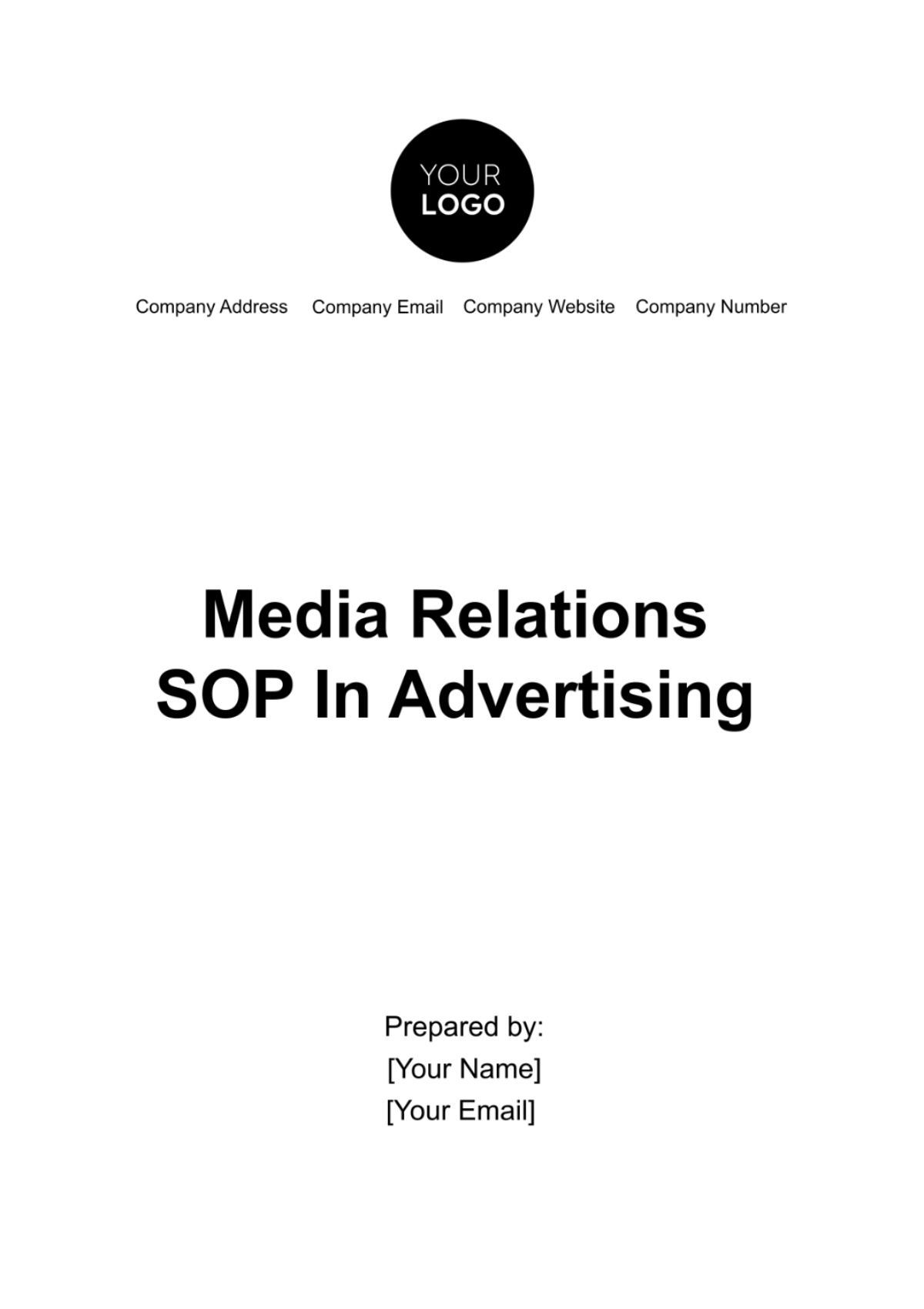
1. Introduction
At [Your Company Name], we recognize the pivotal role that media relations play in shaping our narrative, fostering brand visibility, and connecting with our audience. This Media Relations Standard Operating Procedure (SOP) embodies our commitment to maintaining consistent and effective communication within the ever-evolving landscape of advertising.
a. Purpose and Scope:
This SOP serves as a comprehensive guide outlining the protocols and best practices for engaging with media entities on behalf of [Your Company Name]. It encompasses strategies for managing inquiries, crafting impactful press releases, handling crisis situations, and nurturing strong relationships with key media stakeholders.
b. Importance of Media Relations:
Media relations serve as a cornerstone in our journey towards fostering brand credibility, amplifying our messaging, and fostering mutually beneficial relationships with journalists, influencers, and media outlets. By adhering to the guidelines outlined in this SOP, we aim to ensure a unified and professional approach in all interactions with the media.
c. Alignment with Company Goals:
Our media relations efforts align with [Your Company Name]'s overarching objectives of enhancing brand visibility, maintaining a positive brand image, and disseminating accurate and compelling information about our products, services, and initiatives.
d. Continuous Improvement:
We acknowledge the dynamic nature of media landscapes and commit to continuously refining our media relations strategies. This SOP serves as a foundational document that evolves alongside industry trends, feedback, and insights gained from our interactions with the media.
By adhering to the principles and procedures detailed in this SOP, we aim to uphold transparency, consistency, and professionalism in all our media engagements, further solidifying [Your Company Name]'s position as a leader in the advertising industry.
2. Roles and Responsibilities
At [Your Company Name], effective media relations are a collective effort that involves various dedicated roles. Each role contributes uniquely to our media engagement strategies, ensuring coherence, professionalism, and impactful communication with the press, influencers, and our audience. Below are the key roles and their respective responsibilities within our media relations framework:
Role | Responsibilities |
Media Relations Manager |
|
PR Team |
|
Spokespersons |
|
Marketing Team |
|
3. Media Contact Database
Maintaining an up-to-date and comprehensive Media Contact Database is fundamental to our effective media relations strategy at [Your Company Name]. This centralized repository houses key contacts and pertinent information essential for fostering strong relationships with the media. Below outlines the components and management of our Media Contact Database:
a. Contact Categories:
i. Journalists and Reporters: Includes individuals from print, broadcast, and online media outlets relevant to our industry.
ii. Influencers and Bloggers: Encompasses influential individuals in our niche whose platforms align with our brand.
iii. Media Outlets: Lists major publications, broadcasters, websites, and relevant platforms.
b. Information Captured:
i. Contact Details: Name, outlet, position/title, email address, phone number, and social media profiles where applicable.
ii. Preferences and Notes: Preferences regarding communication channels, topics of interest, and any specific notes from prior interactions.
c. Database Management:
i. Regular Updates: Scheduled reviews and updates to ensure accuracy and relevance of contact information.
ii. Data Security: Adherence to data protection protocols to safeguard sensitive contact details.
iii. Accessibility: Designated access for authorized team members responsible for media engagement activities.
d. Usage Guidelines:
i. Authorized Access: Limiting access to approved personnel involved in media relations activities.
ii. Ethical Use: Ensuring contact details are used solely for professional communication related to [Your Company Name]'s activities.
iii. Consistent Entry: Guidelines for entering new contacts and updating existing information to maintain database integrity.
e. Integration with Media Engagement:
i. Link to Campaigns: Integration of the database with media outreach campaigns for targeted and personalized communication.
ii. Analytics and Feedback: Utilization of the database for tracking engagement metrics and gathering feedback for continual improvement.
Maintaining a robust Media Contact Database enables us to streamline communication, personalize outreach efforts, and nurture enduring relationships with the media, ensuring that our messaging reaches the right audiences at the right time.
4. Media Engagement Process
At [Your Company Name], our Media Engagement Process ensures effective communication with the media, fostering strong relationships and impactful storytelling.
5. Press Release Guidelines
Our press releases at [Your Company Name] adhere to concise, compelling storytelling, emphasizing key messages, and maintaining consistent brand tone. Each release undergoes meticulous review, ensuring accuracy, relevance, and alignment with our media objectives. We prioritize clear headlines, engaging content, and factual accuracy, catering to diverse media platforms. Additionally, strict adherence to formatting, approved templates, and distribution channels ensures uniformity and optimal reach. Our guidelines emphasize timeliness, relevance, and adherence to industry standards, fostering effective communication with journalists, influencers, and audiences.
6. Crisis Communication Plan
The Crisis Communication Plan aims to enable [Your Company Name] to effectively address and mitigate potential crises that could impact our brand reputation, stakeholders, or operations.
Key Components:
Crisis Team:
i. Designate a crisis response team comprising key stakeholders from PR, legal, senior management, and relevant departments.
ii. Clearly outline roles, responsibilities, and escalation procedures for each team member.
Risk Assessment:
i. Identify potential crisis scenarios and their likelihood of occurrence.
ii. Evaluate potential impact on stakeholders, brand image, and operations
Communication Protocols:
i. Establish clear communication channels and protocols for internal and external communication during a crisis.
ii. Define approval processes for messaging and designate authorized spokespeople.
Messaging Strategy:
i. Develop pre-approved messaging templates for various crisis scenarios.
ii. Ensure consistency, transparency, and empathy in messaging while addressing the issue honestly and responsibly.
7. Media Training
At [Your Company Name], we prioritize equipping our team with the skills necessary to confidently engage with the media. Our Media Training program ensures that individuals representing our company are well-prepared to convey our messages effectively and professionally.
Key Components of Media Training:
a. Media Relations Overview:
Introduction to the role of media in shaping public perception and the importance of effective media engagement.
b. Interview Techniques:
i. Training on handling different types of interviews, including print, broadcast, and online media.
ii. Techniques for delivering key messages, managing difficult questions, and maintaining composure.
c. Message Development:
i. Guidance on crafting and delivering concise, impactful messages aligned with company objectives and values.
ii. Ensuring consistency in messaging across various media platforms.
d. Spokesperson Skills:
i. Training designated spokespeople to represent the company professionally and authentically.
ii. Practice sessions for on-camera appearances, voice modulation, and body language.
e. Crisis Communication Training:
i. Preparation for handling media inquiries during crisis situations.
ii. Strategies for maintaining transparency, managing sensitive information, and upholding the company's reputation.
f. Mock Interviews and Feedback:
i. Conducting simulated media interviews to provide practical experience.
ii. Feedback sessions to review performance, identify areas for improvement, and reinforce best practices.
g. Media Engagement Tools:
Familiarization with media monitoring tools, press release distribution platforms, and other relevant resources.
8. Monitoring and Measurement
At [Your Company Name], we prioritize the continual assessment of our media interactions to gauge effectiveness and refine strategies. Our monitoring involves tracking media coverage across various channels, analyzing engagement metrics, and assessing sentiment to understand audience perception.
We employ media monitoring tools to track mentions, articles, and social media engagement, allowing us to evaluate the impact of our media campaigns. By measuring reach, impressions, and sentiment analysis, we gain insights into audience sentiment and the effectiveness of our messaging. These assessments drive our decision-making process, enabling us to adapt strategies for optimal engagement and positive brand perception.
9. Compliance and Legal Considerations
At [Your Company Name], we prioritize adherence to legal and compliance standards in all media interactions. Our approach to media relations aligns with established regulations and ethical guidelines, ensuring transparency, accuracy, and respect for intellectual property rights.
Key Components:
a. Copyright and Intellectual Property:
i. Adherence to copyright laws when using third-party content in press releases or media materials.
ii. Respect for intellectual property rights, including trademarks and branding guidelines.
b. Accuracy and Fact-Checking:
i. Rigorous fact-checking procedures to ensure accuracy in all media communications.
ii. Verification of information before dissemination to avoid misinformation or inaccuracies.
c. Confidentiality and Non-Disclosure:
i. Guidelines for safeguarding sensitive company information during media interactions.
ii. Clear protocols for handling confidential data and ensuring it remains protected.
- 100% Customizable, free editor
- Access 1 Million+ Templates, photo’s & graphics
- Download or share as a template
- Click and replace photos, graphics, text, backgrounds
- Resize, crop, AI write & more
- Access advanced editor
Introducing Template.net's Media Relations SOP in Advertising Template. This editable and customizable tool, powered by our Ai Editor Tool, streamlines media relations processes. Craft effective strategies, manage media inquiries, and maintain brand consistency effortlessly. Elevate your media relations game with Template.net's innovative solutions.

